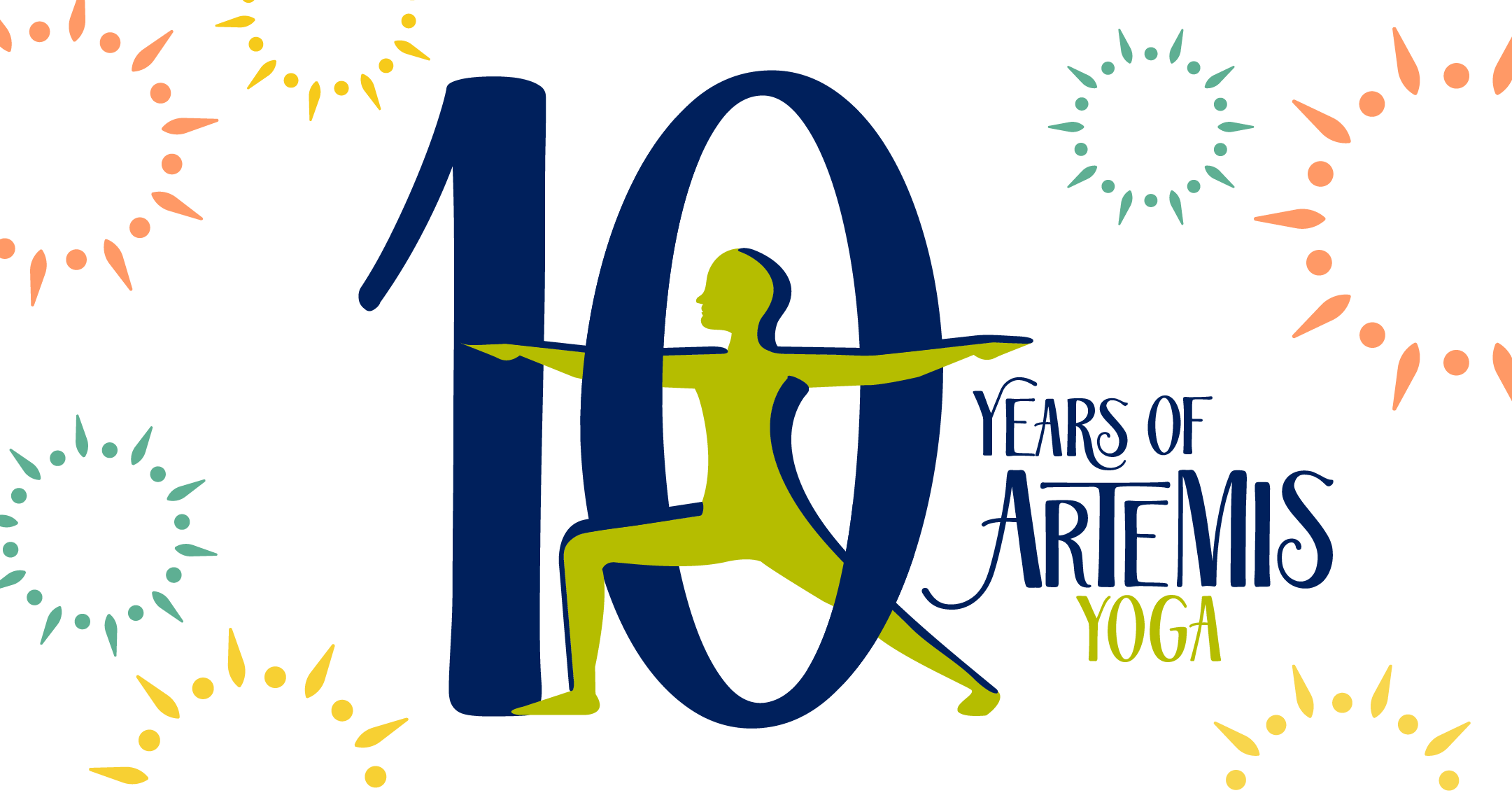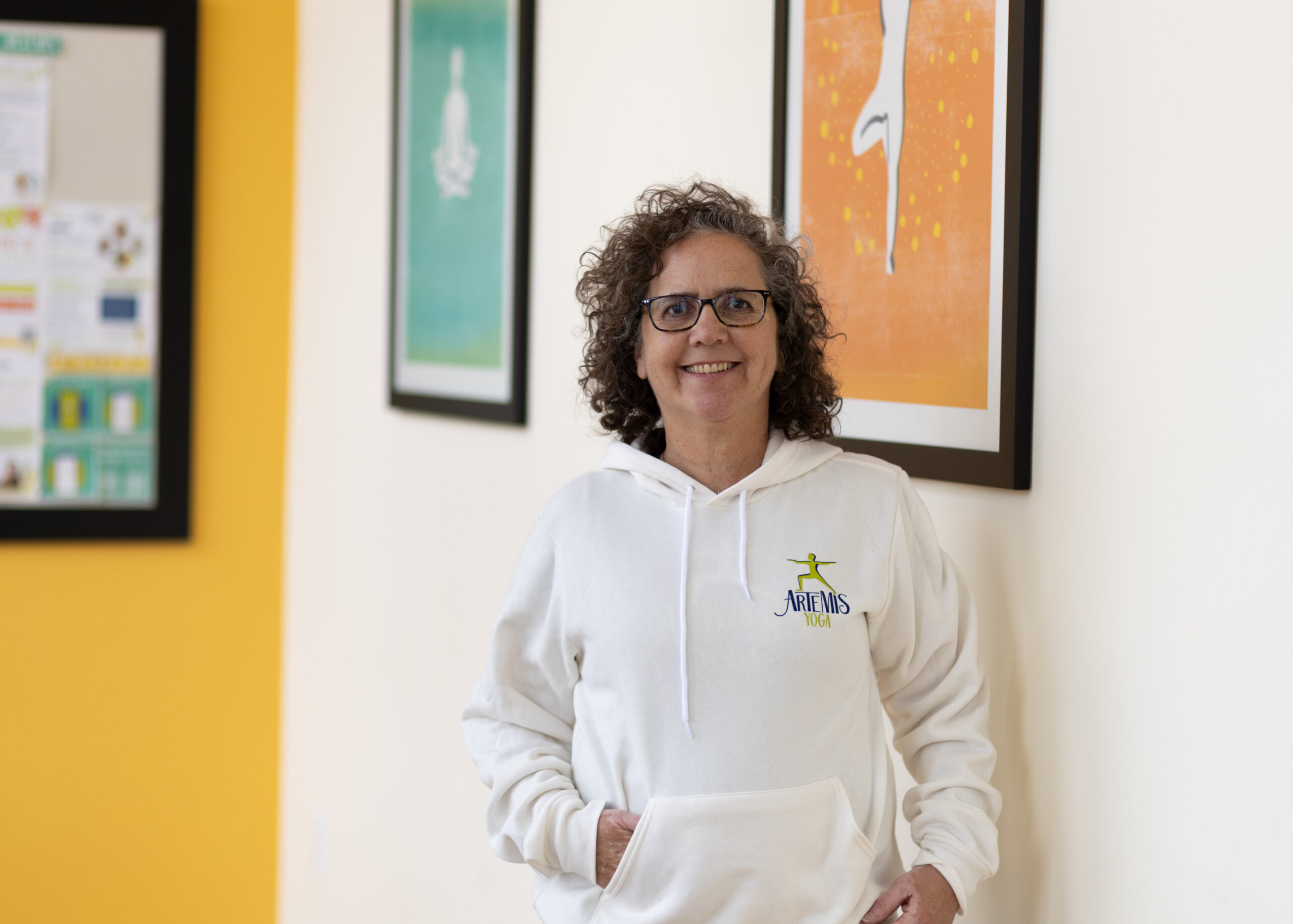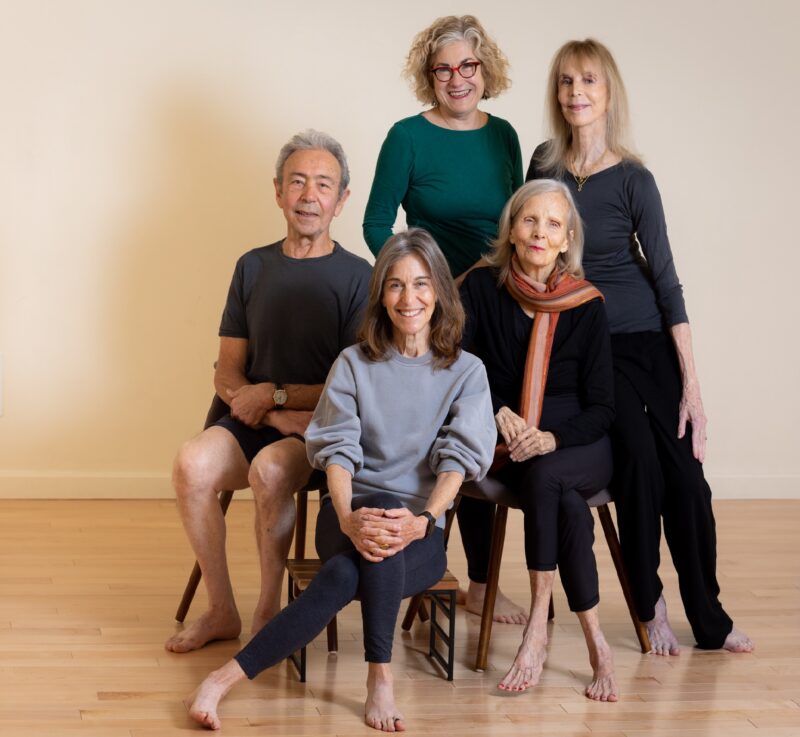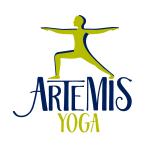What Is Iyengar Yoga?
Based on the teachings of BKS Iyengar, Iyengar Yoga takes a pose-by-pose approach to classical yoga so you can build on your individual progress as you gain strength and increase flexibility. Iyengar Yoga seeks to align the body, mind and breath while using props to make yoga accessible to all.
B.K.S Iyengar is credited with bringing yoga to the West and is considered a pioneer of yoga. After practicing for nearly 80 years starting as a young teen recovering from illness, he developed a method that brings acute attention to both the postures and the breath work and ultimately to one’s own body.
The Iyengar Yoga method teaches classical poses with a deliberate emphasis on alignment and awareness of the student to their own body. A hallmark is the ability to make each pose accessible to each student through the use of props.
Iyengar Certified Teachers must complete a rigorous tiered certification and assessment program to earn the credential. We are fortunate at Artemis to have six Certified Iyengar Teachers: Jarvis Chen, Sue Gormley, Victoria Kuenerz, Susan Mulski, Rahel Wasserfall, and Mary Wixted.
From the moment I walked in and my first contact with Liz Padula, Artemis has been a welcoming, safe, and highly professional environment, and inclusive of all genders and body types. I take Iyengar classes weekly with three different instructors, and they are each well certified and excellent. The Iyengar approach allows you to practice where you are, given your structural issues, and the instruction takes who you are into consideration, with personalized attention to your particular needs.
Steve
How does Iyengar Yoga differ from Vinyasa Flow and Ashtanga Yoga?
In general, you will find the poses in Iyengar classes to be familiar but the structure and sequencing to be different. While other yoga methods instruct with an attention to alignment, Iyengar teachers introduce postures in a sequence of teaching that emphasizes optimal body alignment and individualized adjustment to build strength and flexibility in each student.
You may find that poses are held longer and explored with a variety of props more than in other classes. In Flow or Ashtanga Yoga, you will generally move fluidly from pose to pose with sun salutations as a regular component.
Iyengar classes are also known for teaching inversions in an accessible and safe manner, for example the use of blankets to support the neck in a shoulderstand.
And yet these distinctions are not always so black and white and many of our flow-trained teachers at Artemis Yoga have studied the Iyengar method or trained with Iyengar instructors for many years and thus their own teaching is influenced by the method as well.
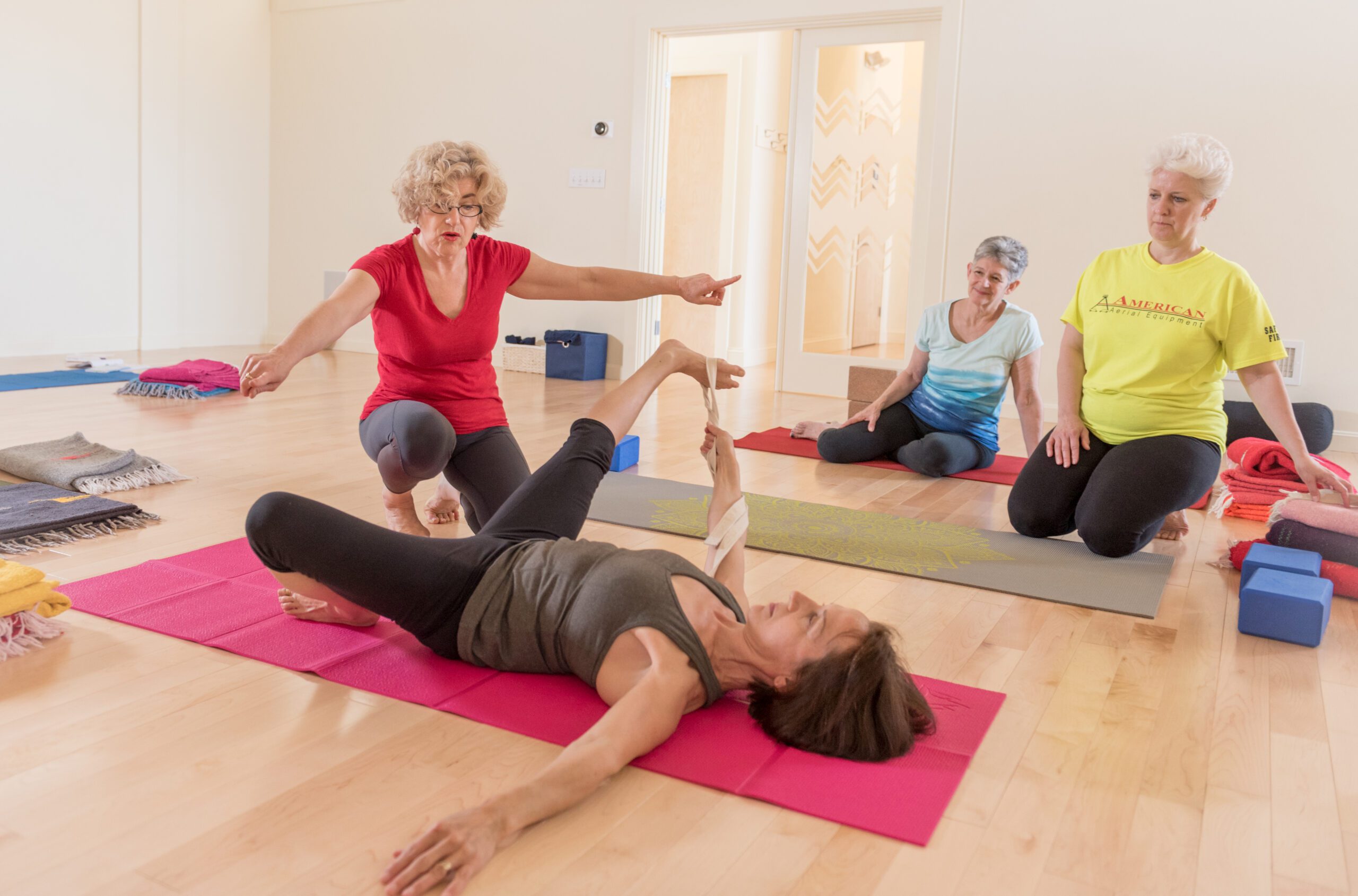
Should I Take Iyengar Along With Other Types Of Yoga?
Yes! Students find that Iyengar classes inform their flow-based and restorative practices. You may find that you want to focus on one type of class but for others the variety is helpful.
It is just like any other activity, some days you might want to read non-fiction and focus on a topic and other days you may find you like to immerse yourself in a good juicy novel. Both are good for the soul. Or for those who enjoy different forms of exercise, you could think of your Iyengar class as a day that you work with a trainer on body mechanics and strength building and the flow class as a day you work on cardio circuits and/or run or cycle with a meditative type of pace.
Iyengar Yoga Offerings At Artemis
Artemis Yoga offers Iyengar Yoga for all abilities: Fundamentals, General, and Experienced, as well as a specialty Rope Wall class.
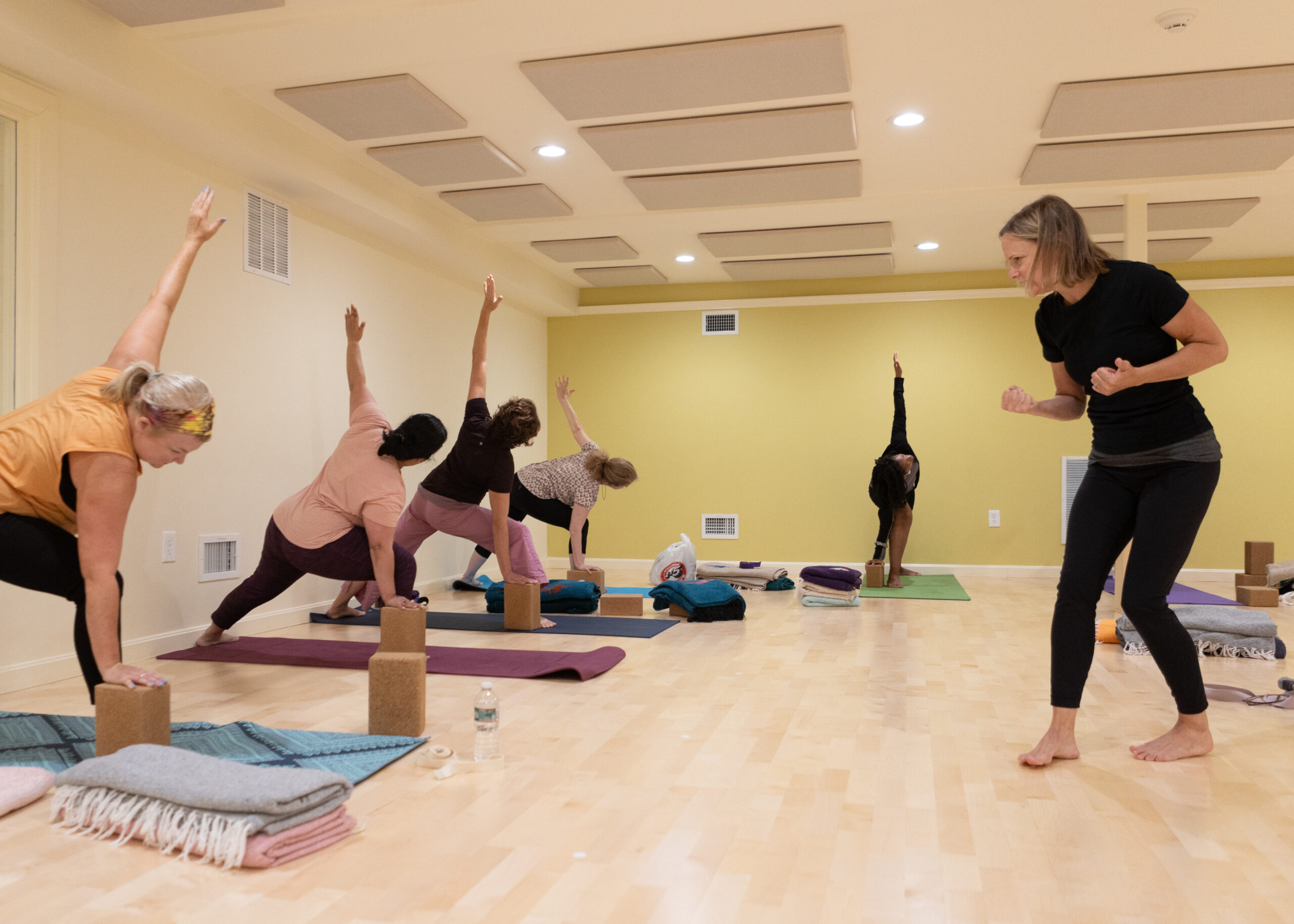
Iyengar Fundamentals
Iyengar Fundamentals introduces you to classic yoga poses focusing on alignment and pose-by-pose instruction. This all-level, beginner-friendly class provides a full experience of yoga, concentration, and quieting of the mind. With a demonstration style of instruction, the pace is deliberate and methodical, ideal for those new to yoga or seeking to explore the fundamentals of yoga. Props such as blocks, straps, blankets and chairs make a pose more accessible.
Iyengar General Level
Iyengar General Level is our hallmark Iyengar Yoga class that incorporates a progressive method of teaching designed to open and strengthen the body while drawing the mind inward. Ideally, you are familiar with the Iyengar teaching method or alignment-based yoga instruction. The pace is engaging and steady. Classes are taught in a well-thought-out sequence based on a family of poses with a physical or intellectual theme to protect the body and engage the mind. You will work with a safe range of motion, body alignment and breath awareness. The class will expand upon standing poses, preparations for shoulder stand and other fundamental poses, so you build strength, stamina and flexibility. Props such as blocks, straps, blankets, and chairs are used to enhance a pose or to make a pose more accessible.
Iyengar (Experienced)
Iyengar (Experienced) is for experienced students who have a solid understanding of Iyengar Yoga and seek more advanced postures. Students should have a regular yoga practice. The pace is engaging and active. This class will refine the alignment of poses with a workshop-style approach focused on detail and precision. Students in this class will regularly practice inversions such as shoulder stands and headstands, and the weekly themes will introduce the full family of poses and pranayama. Props such as blocks, straps, blankets, and chairs may enhance a pose or make a posture more accessible.
Ropes Yoga
A Rope Wall class will introduce this fun prop into your practice! Ropes Yoga can help to strengthen and open up new areas of your body and help you explore familiar poses in new ways. All levels are welcome in this class but you should have a basic understanding of yoga, of any lineage for this class. The pace is active and fun. In sanskrit, the language of yoga, ropes are called yoga kurunta; kurunta is translated as “puppet”, like a marionette puppet. You literally use the ropes as if you were a puppet on a string bringing playfulness into your practice. The ropes can help you by supporting postures so you gain greater mobility and flexibility, releasing tension and stiffness. Many students find that the wall ropes can help guide body alignment more clearly.
Who Should Take Iyengar Classes?
Everyone!
Often people with injury enjoy the personal attention and adjustments of Iyengar trained instruction but really anyone can join an Iyengar class to learn and practice. We welcome you to come on in and see for yourself!
Joining Artemis Yoga is the best thing I've done for myself in years! A health problem had cost me my muscle mass and made most forms of exercise impossible. I tried many things to recover my strength, including joining a gym, swimming and physical therapy all without benefit. Running out of ideas, I decided to try Iyengar Yoga at Artemis and am so glad I did! The studio is extremely welcoming and the instructors expertly trained in Iyengar Yoga and philosophy. I took fundamental and general level classes with Rahel Wasserfall weekly and always felt challenged but without fear of injury. My strength, endurance and confidence gradually returned and now, a year and a half later, I'm able to do all I need to do physically and with a much improved attitude!
Cheryl


